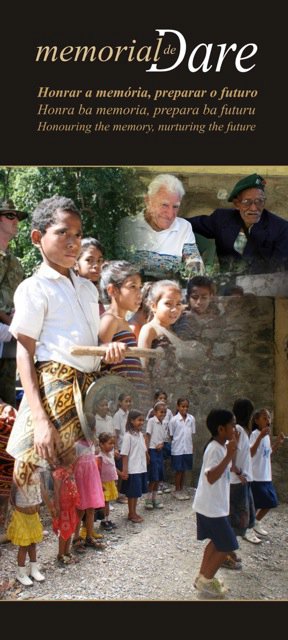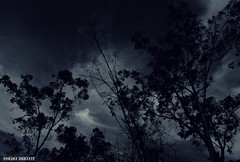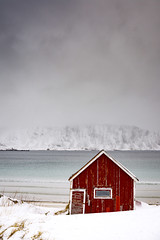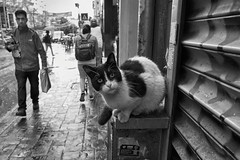Dili: Savour the best of the Leste
By James Rose
Timor-Leste still retains an unspoiled charm, writes James Rose.

A golden sunset in Dili, Timor-Leste. Photo / Getty Images
At the eastern edge of Dili, the capital of Timor-Leste, a giant statue of Jesus stands high on a rock. From here the coast sweeps around majestically until it hits the long, wooden Pertamina Wharf, owned and padlocked by the eponymous Indonesian state-owned gas and oil company, to the west.
From this coastal sweep, Dili reaches back to hinterland, clogged roads and broad, chaotic boulevards running through dusty neighbourhoods, which quickly give way to lush forest and towering peaks.
You wouldn’t want to spend a great deal of time here, but as an embarkation point and a base, Dili is not without charm.
Colonialism has left an indelible stain on Timor-Leste, known widely as TL.
Dili’s Chega! Museum was once a prison used both by Indonesians and the Portuguese when they were in power. It offers a harrowing insight into colonial repression.
Some cells remain as they were used. Measuring roughly two metres by two metres, each held up to 25 prisoners at a time, sometimes for months. Their graffiti and sweat stains still mark the walls.
Santa Cruz Cemetery is also worth a visit, if only to recall the massacre of more than 250 peaceful Timorese mourners here in 1991, an event that escalated the country’s fractious path to independence.
The Dare Memorial and Museum, just outside Dili, commemorates the Timorese peoples’ role in fighting the Japanese occupation of Timor during World War II.
There is little nightlife in Dili, partly because of the generally conservative Christian culture, partly because there’s no infrastructure for it. This could be seen as a virtue; Southeast Asia surely has enough booze-drenched, sexed-up, neon-lit hot-spots.
Dili’s tourism planners are conscious of the strengths of differentiation and Timor-Leste is being developed, as one local insider tells me, as “low volume, high value, eco-based and community oriented”.
The pitfalls of “Balinisation” are all-too-well understood in this half-island nation.
Here, you’re unlikely to find hawkers, pirate-copy shops or brands, sex trading, drugs or “trailer trash” lording it in the so-called Third World.
What barter there is is gentle and good-natured. Even taxis drivers don’t haggle much if you offer a fair foreigner premium.
Outside the capital, the few roads caress and hug breathtaking scenery. Along the coastal strip, scalloped by white sandy bays, each curve reveals awesome views as the road drops and sweeps around the edges of a landmass that drops swiftly into the sea.
Heading inland can be rough driving, but you will quickly dive into a world of lush jungle, a haven for Timor’s past generations of guerrilla fighters, which surprises by virtue of being so close to the capital.
Heading out of Dili on the coastal plain and a straight road, we pass through tiny villages with log and thatch stalls abutting the narrow, one-lane “highway”.
UN vehicles, as elsewhere in the developing world, charge through with an air of importance, as does a government motorcade. Black pigs, pretty-faced goats, small, sleek cattle and water buffalo see the road as less malevolent than they should and plod across it, oblivious to traffic.
TL has some of the world’s best, most pristine dive sites. About an hour outside Dili, at a spot about an hour off-shore, we’re plunging into clear, bath-warm water to marvel at teeming cities of colourful coral and vibrant, slow-moving fish. Purples, iridescent blues, orange stripes and shimmering blacks vie for attention while pastel-coloured corals invite exploration into further centres of life.
“Vis”, as they say in the business, is a good 30m.
After a morning of stunning dives, we wander along the “highway” to a tiny village of thatched huts and curious kids.
The Timorese seem friendly enough, but very shy, and still a little uncomfortable with foreigners. You get the feeling they want to be nice but aren’t sure how. Few speak English, especially outside Dili, so sign language and awkward smiles are the lingua franca.
A lunch of fresh open-roasted fish, pulled out of the water we’ve just been diving in, and balls of white rice wrapped in cute, woven vine containers – the perfect sustainable packaging – is eaten on the beach. Friendly neighbourhood dogs clean up the scraps.
The water we have been diving in eventually deepens to 3000m. It shallows again at Atauro Island.
The island greets newcomers on the daily ferry from Dili with palm frond-lined beaches dotted by simple huts hugging white sandy beaches. This rocky, densely forested link in a chain of volcanic islands spreads out like a setting for Survivor. Mist swirls up from the island’s depths, promising to reveal a skull cave Bond villain lair.
For visitors, the lodges are the island’s hub as tourist infrastructure is mostly absent. Tua Koin is a simple eco-lodge with comfortable rooms and bamboo balconies overlooking the deep blue beyond. Perfect for a late-afternoon cold one.
The huts are made from local materials and to an indigenous design. All profits here go back to the local community and a sense of eco-consciousness is refreshingly infused throughout.
Top-quality diving shelves abound. In water this clear it feels like floating in glass. For those needing to work up a sweat, a jaunt up 995m-high Mt Maucoco will do the job. Spending a day walking up and back, flopping in for a swim and having a cool drink on the balcony is about as good as it gets and a Timor highlight.
Atauro is a place to go to escape the real world. The gently lapping water and the pulse of the jungle replace traffic and phones as your aural backdrop. This is the language of TL.
This tiny country is just now reaching out to the world and is still a little startled to discover the world is willing to reach back.
Tourism here is something of a battleground. While mostly good people seem to be running things now, it may get ugly if development dollars begin to flood in.
My advice: go there before that happens.
CHECKLIST
Getting there: Airnorth flights from the Gold Coast (OOL) to Darwin (DRW) depart every Wednesday and Thursday via Mount Isa. Airnorth flies Darwin to Dili, six days a week.
Where to stay: Accommodation options are limited, even in Dili. Hotels tend to be three-star at best, but Hotel Esplanada, on the beach strip in Dili, has clean rooms with en suites, TV/DVD, pool and a nice restaurant overlooking the water.
Getting around: Taxis are easy to get in Dili, generally around $1-$3 for anywhere in the city and drivers will barter. Drivers for longer trips are plentiful and inexpensive, as are rental cars. Getting away from Dili can be challenging, as the roads are few and very inconsistent.
Money: US dollars are used. You’ll get some of your exchange change in local currency, which is largely useless for foreigners.
James Rose was a guest of Airnorth.
http://www.nzherald.co.nz/travel/news/article.cfm?c_id=7&objectid=10826635









Leave a comment